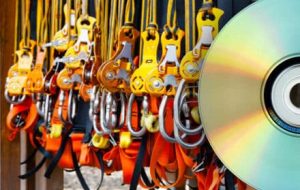Occupational Noise Exposure
Home More Training Resources OSHA General Industry Training Requirements Occupational Noise Exposure
OSHA Training Requirements - Occupational Noise Exposure
This website is not the official or final authority to determine OSHA compliance responsibilities, which are set forth in OSHA standards themselves, and the Occupational Safety and Health Act of 1970. Because OSHA regulations are constantly being added, deleted, and/or revised, you must not rely on this website as the official or final authority of OSHA training requirements; refer to the official OSHA regulations available on OSHA’s website (osha.gov). – See disclaimers.
1910.95 – Occupational Noise Exposure
(g)(8)(ii)- Unless a physician determines that the standard threshold shift is not work related or aggravated by occupational noise exposure, the employer shall ensure that the following steps are taken when a standard threshold shift occurs:
(A) Employees not using hearing protectors shall be fitted with hearing protectors, trained in their use and care, and required to use them.
(B) Employees already using hearing protectors shall be refitted and retrained in the use of hearing protectors and provided with hearing protectors offering greater attenuation if necessary.
(i)(4) – The employer shall provide training in the use and care of all hearing protectors provided to employees.
(k)- “Training program.”
(1) The employer shall train each employee who is exposed to noise at or above an 8-hour time weighted average of 85 decibels in accordance with the requirements of this section. The employer shall institute a training program and ensure employee participation in the program.
(2) The training program shall be repeated annually for each employee included in the hearing conservation program. Information provided in the training program shall be updated to be consistent with changes in protective equipment and work processes.
(3) The employer shall ensure that each employee is informed of the following:
(i) The effects of noise on hearing;
(ii) The purpose of hearing protectors, the advantages, disadvantages, and attenuation of various types, and instructions on selection, fitting, use, and care; and
(iii) The purpose of audiometric testing, and an explanation of the test procedures.
(l) – “Access to information and training materials.”
(1) The employer shall make available to affected employees or their representatives copies of this standard and shall also post a copy in the workplace.
(2) The employer shall provide to affected employees any informational materials pertaining to the standard that are supplied to the employer by the Assistant Secretary.
(3) The employer shall provide, upon request, all materials related to the employer’s training and education program pertaining to this standard to the Assistant Secretary and the Director.

On Site OSHA Training Classes

Online OSHA Training Courses

OSHA Training DVDs with Leader's Guide
Conduct OSHA training in-house with our OSHA training DVD's. Each one comes with a leader's guide.
